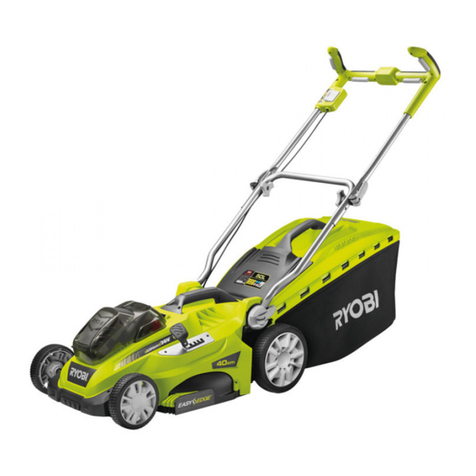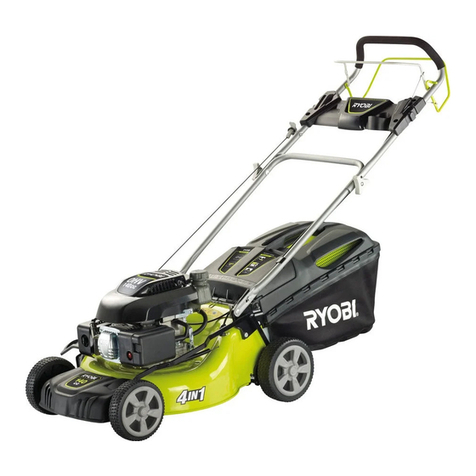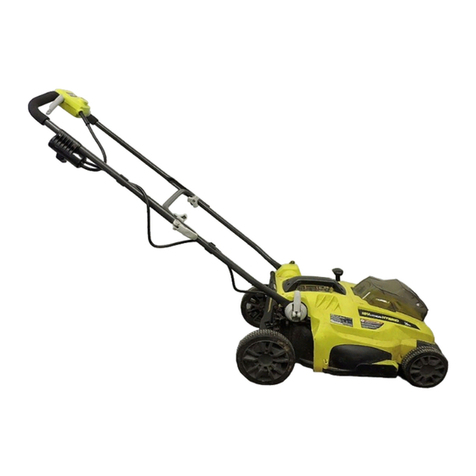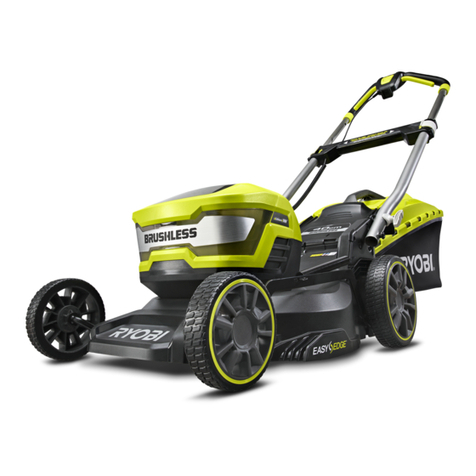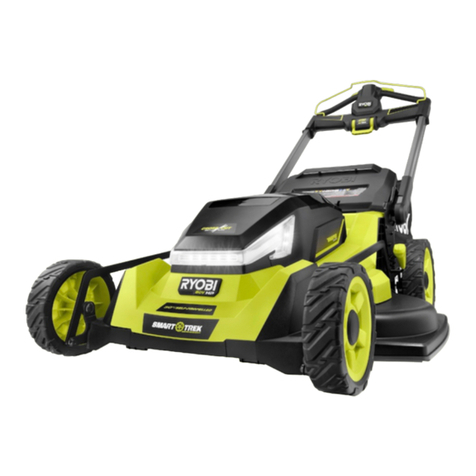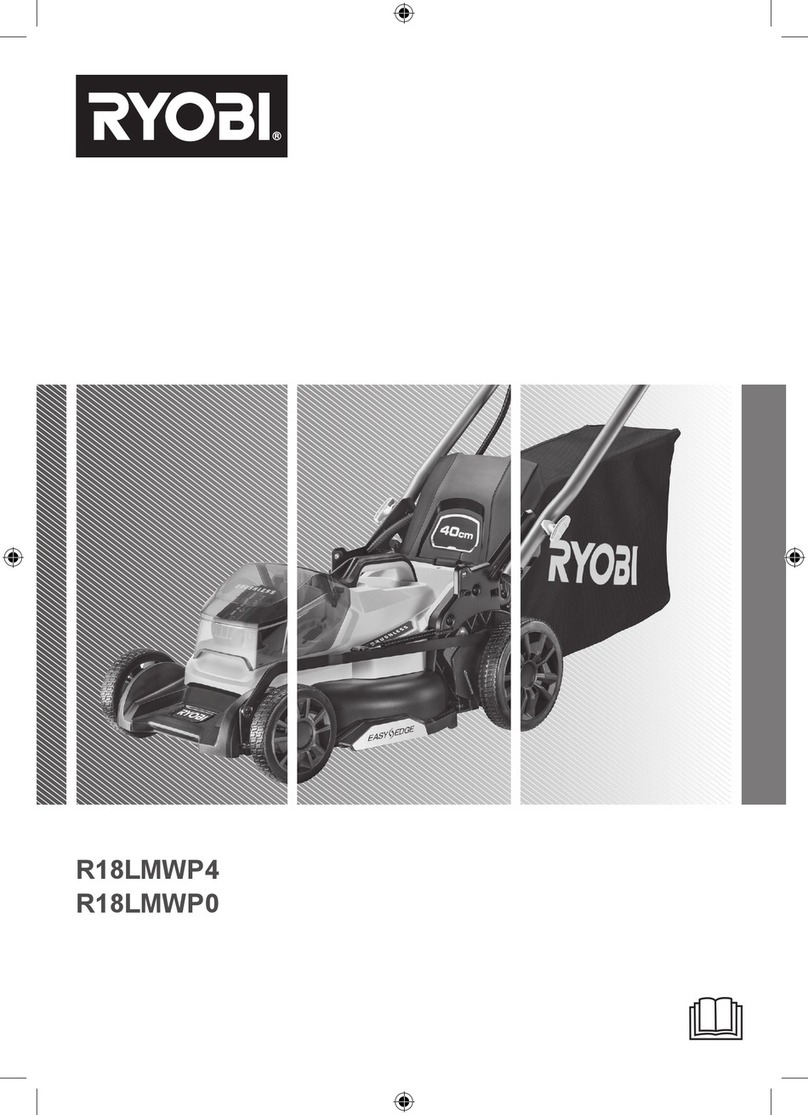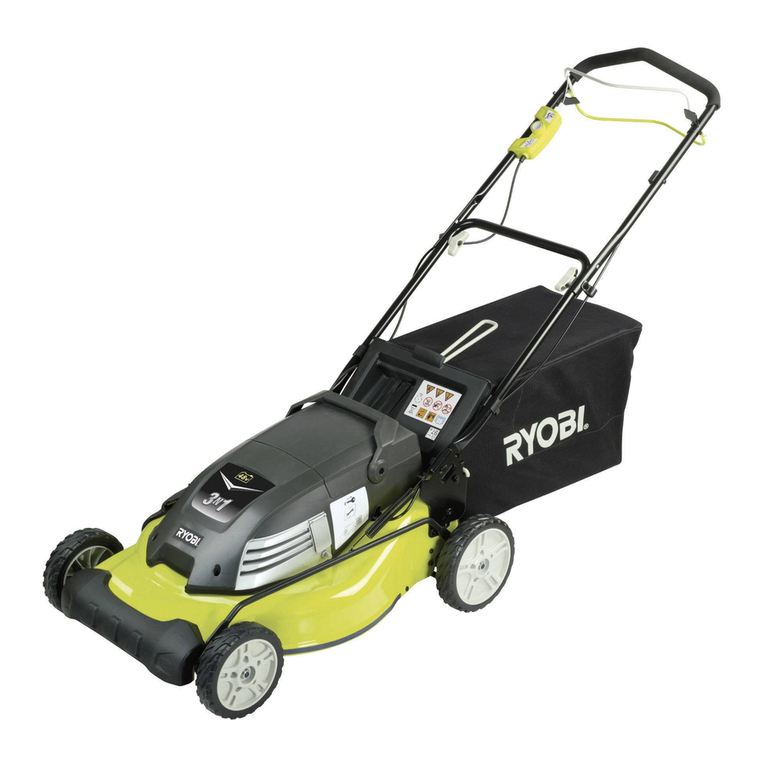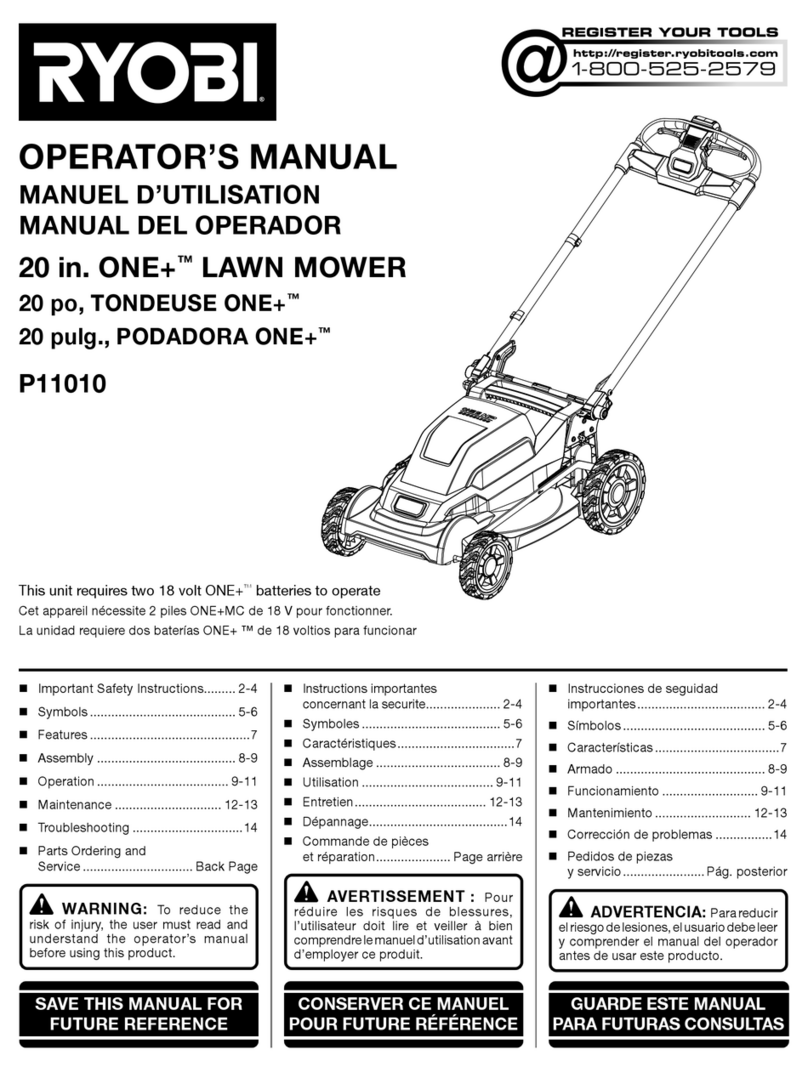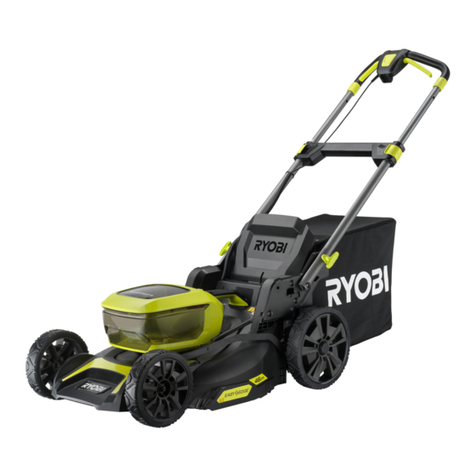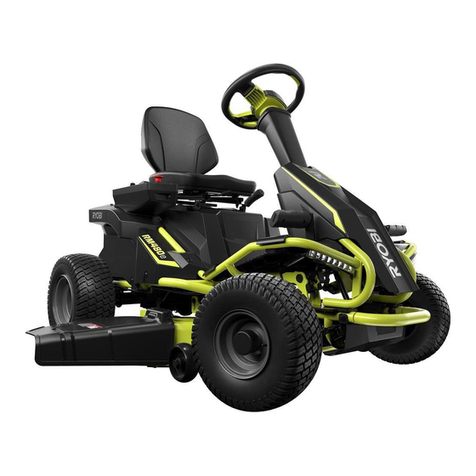English
1
EN
FR
DE
ES
IT
NL
PT
DA
SV
FI
NO
RU
PL
CS
HU
RO
LV
LT
ET
HR
SL
SK
BG
GENERAL SAFETY RULES
WARNING
To reduce the risk of injury, the user must read and
understand the operator’s manual.
WARNING
Do not attempt to operate this mower until you have read
thoroughly and understood completely all instructions,
safety rules, etc., contained in this manual. Failure to
comply may result in accidents involving electric shock,
fire, and/or serious personal injury.
PERSONAL SAFETY
■This lawn mower is capable of amputating hands and
feet, and throwing objects. Failure to observe all safety
instructions could result in serious injury or death.
■Never allow children or people unfamiliar with the
instructions to use the machine. Local regulations may
restrict the age of the operator.
■Stay alert, watch what you are doing, and use common
sense when operating the lawn mower. Do not operate
the mower while tired or under the influence of drugs,
alcohol, or medication. A lapse in concentration while
operating the machine may result in serious personal
injury.
■Wear heavy, long trousers, long sleeves, boots,
and gloves. Do not wear loose fitting clothing, short
trousers, sandals, or go barefoot.
■Always wear safety glasses with side shields. Use face
mask if operation is dusty.
■Always be sure of your footing. Keep firm footing and
balance. Do not overreach. Overreaching can result in
loss of balance.
■Walk, never run.
■Mow across the face of slopes, never up and down.
Exercise extreme caution when changing direction on
slopes.
■Do not mow near drop-offs, ditches, excessively steep
slopes, or embankments. Poor footing could cause a
slip and fall accident.
■Plan your mowing pattern to avoid discharge of material
toward roads, public pavements, bystanders and the
like. Also, avoid discharging material against a wall or
obstruction, which may cause the material to ricochet
back toward the operator.
WORK AREA SAFETY
■Never mow while people, especially children, or pets
are nearby.
■Always mow in the daylight or in good artificial light.
■Do not operate the machine in explosive atmospheres,
such as in the presence of flammable liquids, gases or
dust. The tool create sparks which may ignite the dust
or fumes.
■Objects struck by the lawn mower blade can cause
severe injuries to persons. Thoroughly inspect the area
where the machine is to be used and remove all rocks,
sticks, metal, wire, bones, toys, or other foreign objects.
■Do not operate the machine in wet grass or in the rain.
■Keep in mind that the operator or user is responsible
for accidents or hazards occurring to other people or
their property.
■Tragic accidents can occur if the operator is not alert to
the presence of children. Children are often attracted
to the machine and the mowing activity. Never assume
that children will remain where you last saw them.
■Keep children out of the mowing area and under the
watchful care of a responsible adult other than the
operator.
■Be alert and turn mower off if a child enters the area.
■Never allow children or people unfamiliar with the
instructions to use the machine.
■Use extra care when approaching blind comers, shrubs,
trees, or other objects that may block your view.
■Keep work area clean.
■Keep work area well lit.
■Cluttered or dark areas invite accidents.
GARDEN TOOLS USE AND CARE
■Before using, always visually inspect to ensure blades,
blade bolts, and cutter assembly are not worn or
damaged.
■Replace worn or damaged blades and bolts in sets to
preserve balance.
■Check all nuts, bolts, and screws at frequent intervals
for proper tightness to be sure the equipment is in safe
working condition.
■Check the grass catcher frequently for wear or
deterioration.
■Replace worn or damaged parts.
■Do not force the product. It will do the job better and
safer at the speed for which it was designed.
■Do not overload your mower. Mowing long thick grass
may cause the motor speed to drop, or the power to cut
out. When mowing in long thick grass a first cut with the
cutting height set higher will help reduce the load. See
adjusting the blade height.
■Stop the blade when crossing gravel surfaces.
■Do not pull the mower backward unless absolutely
necessary. If you must back the machine away from a
wall or obstruction, first look down and behind to avoid
tripping or pulling the machine over your feet.
■Stop the blade(s) if the machine has to be tilted for
transportation when crossing surfaces other than grass,
and when transporting the machine to and from the



